19 Jun Crewel and Unusual with Judith Sullivan
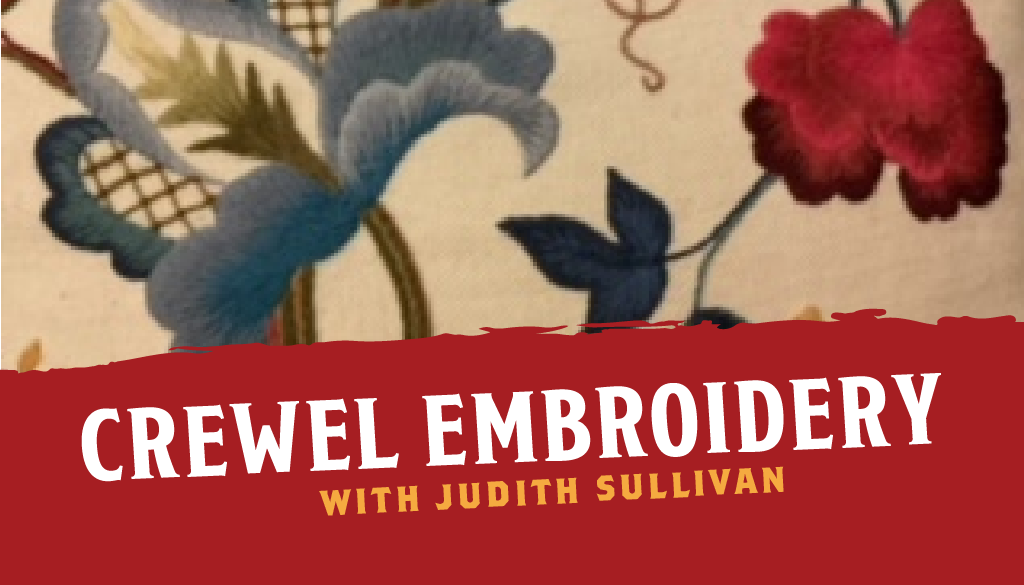
Judith Sullivan is steeped in needlework, from her day job as a kiltmaker to her exploration of myriad forms of embroidery on the side. While she usually teaches a class on sewing and tailoring your own kilt at the Folk School, this year she will join us to share her knowledge of crewel embroidery, a type of embroidery using wool thread that reached its popularity in 17th century England.
Read more about Judith and her class in our interview below! Interested in learning this style of embroidery? Register today to secure your spot.
JCCFS: Tell us a bit about yourself and your background with embroidery.
JS: I have had a needle in my hand for much of my life, and I am interested in many types of needlework. I began doing crewel embroidery as a teenager, and finished many pieces, a number of which were my own designs. Crewel embroidery has quite a long history in Europe and America, and it has always fascinated me to see how embroiderers through the centuries have used their skills to embellish all types of artifacts, from bed hangings to clothing, cushions, keepsake boxes, petticoats, pockets, and many other items. I attended the Elsa Williams School of Needle Arts 1976-1980 and taught crewel embroidery at my yarn and needlework shop during this time. I continued to embroider for my own pleasure through the years, and recently attended an advanced needlework retreat in the UK in order to improve my skills and try new techniques. I think of crewel embroidery a type of “painting” with yarn, and it satisfies my need to create objects that are both beautiful and useful.
JCCFS: What kinds of crewel embroidery techniques will students explore in your class?
JS: In my class, I plan to teach traditional stitches and techniques that will allow students to create unique pieces of embroidery, with an emphasis on creative use of stitches and color. We will work on a smaller “sample” piece, and then move on to a larger piece where students can really get a feel for the medium.
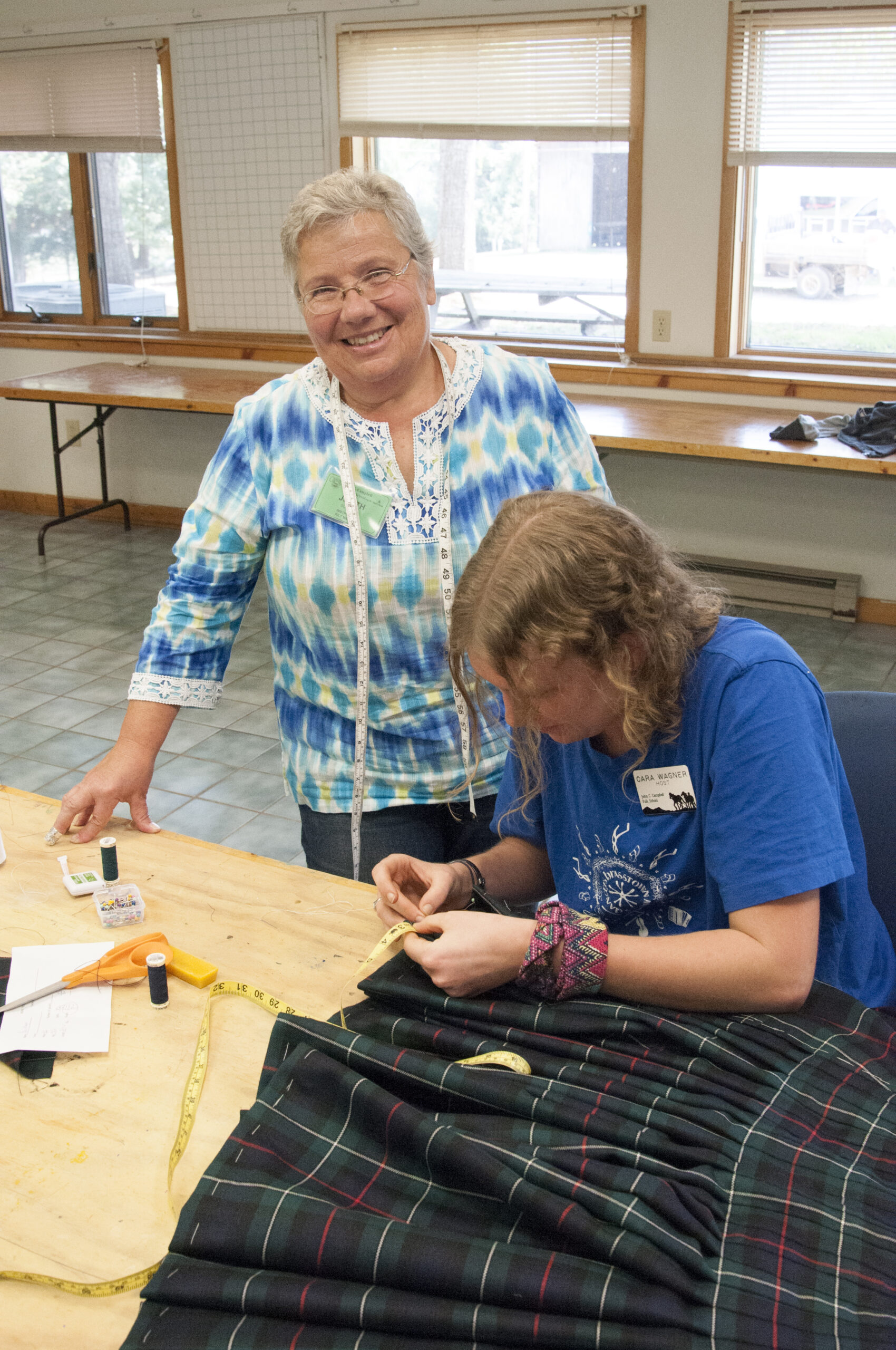
Judith in a previous sewing class at the Folk School
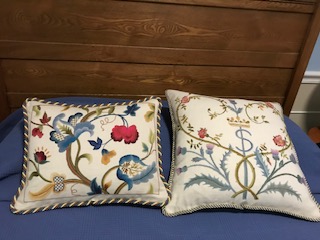
Embroidered pillows
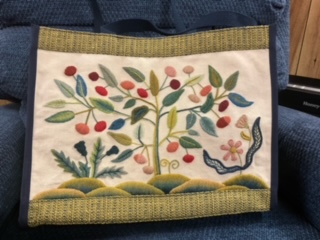
Judith’s tote bag
JCCFS: What can students expect to leave your class with?
JS: I try to have a relaxed, fun class, with opportunities to learn both basic and more advanced stitches, color theory and usage, as well as the historical background of this type of embroidery. Though the materials are simple (linen fabric, wool yarn, a needle, and an embroidery hoop) the possibilities are endless, and each student’s finished projects will be unique. Students will be provided with two printed designs and many color choices. The projects will be suitable for framing, or to be used as pillows, pincushions, or other items.
JCCFS: What is your favorite aspect of the John C. Campbell Folk School?
JS: I love coming to the Folk School, both as an instructor and as a student. I have found that Folk School attendees are always interesting to talk to and fun to be with. When I teach, I find that by the end of the week students have “bonded” and become fast friends with common interests and goals. It’s a highlight of my year to come and create something beautiful as a student, and I have definitely expanded my skill set to include things that I had never tried before, like enameling and making a pair of shoes. The Folk School is my happy place and I always look forward to being there.
JCCFS: Where do you draw inspiration from for your needlework pieces?
DD: I have often been inspired by historical pieces of needlework. I think about the women who created the pieces, and how they spent their time making everyday objects more beautiful with stitches. I try to make the pieces I design more personal by including motifs that have meaning to me, while attempting to be true to the style of historic pieces.
JCCFS: What’s one piece you’ve made recently that you’re especially proud of?
JS: I recently completed a tote bag that is embroidered with a tree motif adapted from a set of bed hangings. It is bright, fun, and fanciful, and I wanted to make it into something that I could carry with me. I will certainly be teaching many of the stitches used on the bag in my class; it’s just one example of making an everyday object more beautiful with embroidery.
JCCFS: What advice would you give to a new student or aspiring needleworker?
JS: I think that people need to be willing to give themselves time to acquire new skills. Any first attempt at a new medium may not fit the student’s mental picture of how it “should” look, but with patience and practice, the desired results can be achieved. My biggest regret is putting down pieces that I didn’t think were perfect enough; it took me many years to learn that I was the only person who saw the flaws.
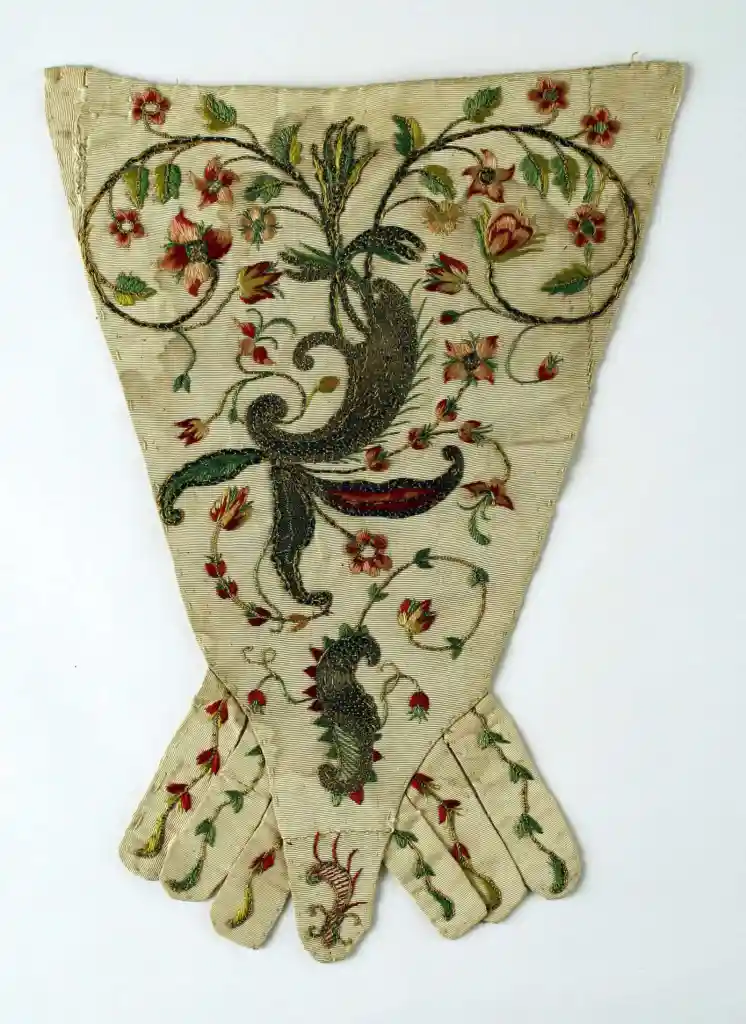
17th Century embroidery style
Upcoming Class with Judith
Crewel Embroidery
October 20-25, 2024
Gain an introduction to the fascinating world of crewel embroidery. Start with stitching a small piece, while learning the most commonly used stitches, traditional materials, and some of the history of this unique type of surface embroidery, before moving on to begin a larger piece. No embroidery experience necessary.
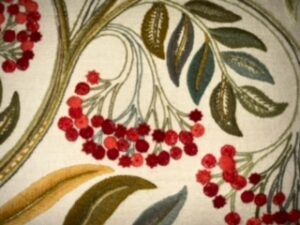
About Judith Sullivan
Judith Sullivan has been teaching various types of embroidery and needlework for over 45 years. She learned her craft from a number of teachers, including residential programs in both the US and the UK. She also teaches Kiltmaking at the Folk School.



No Comments